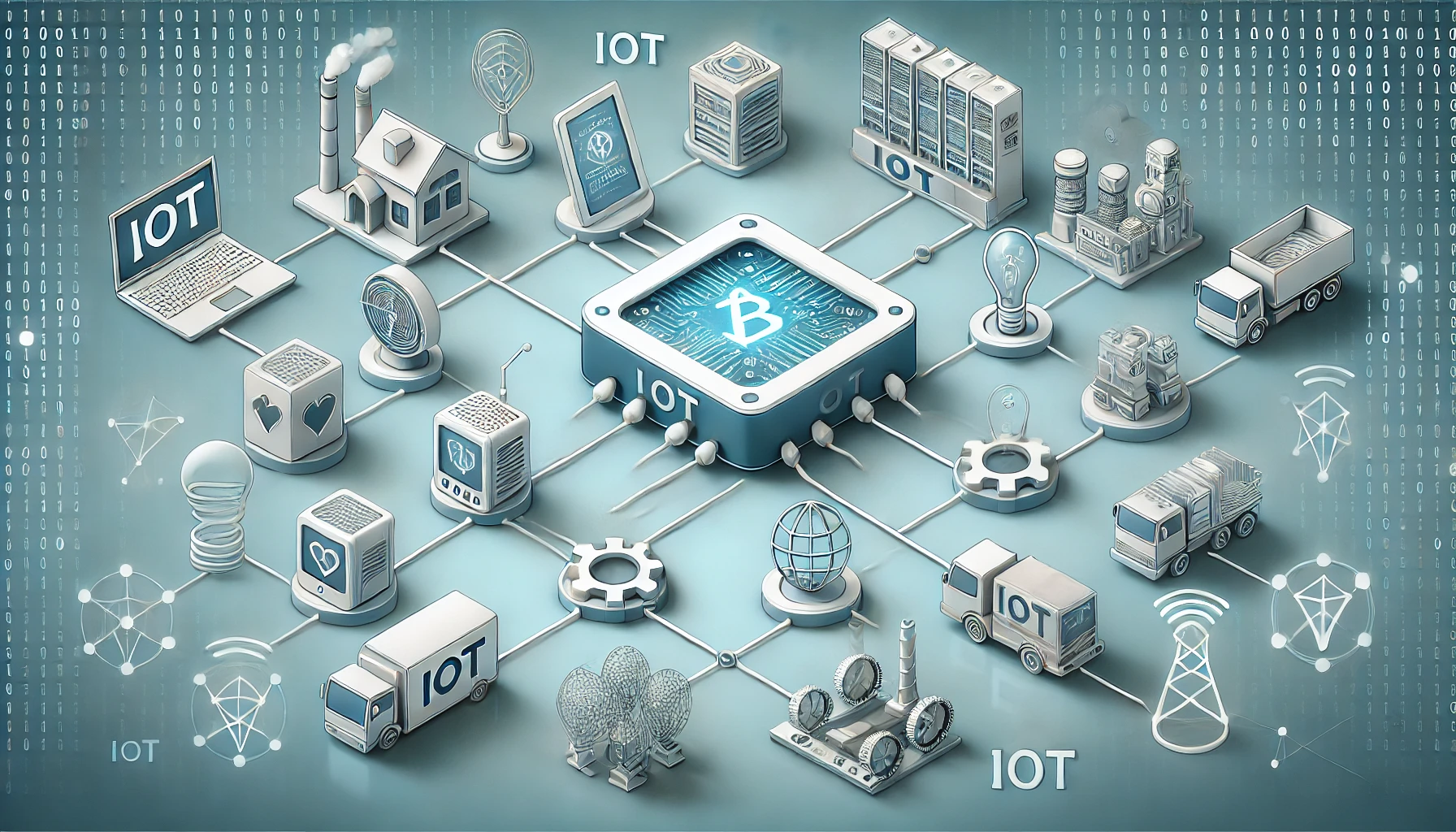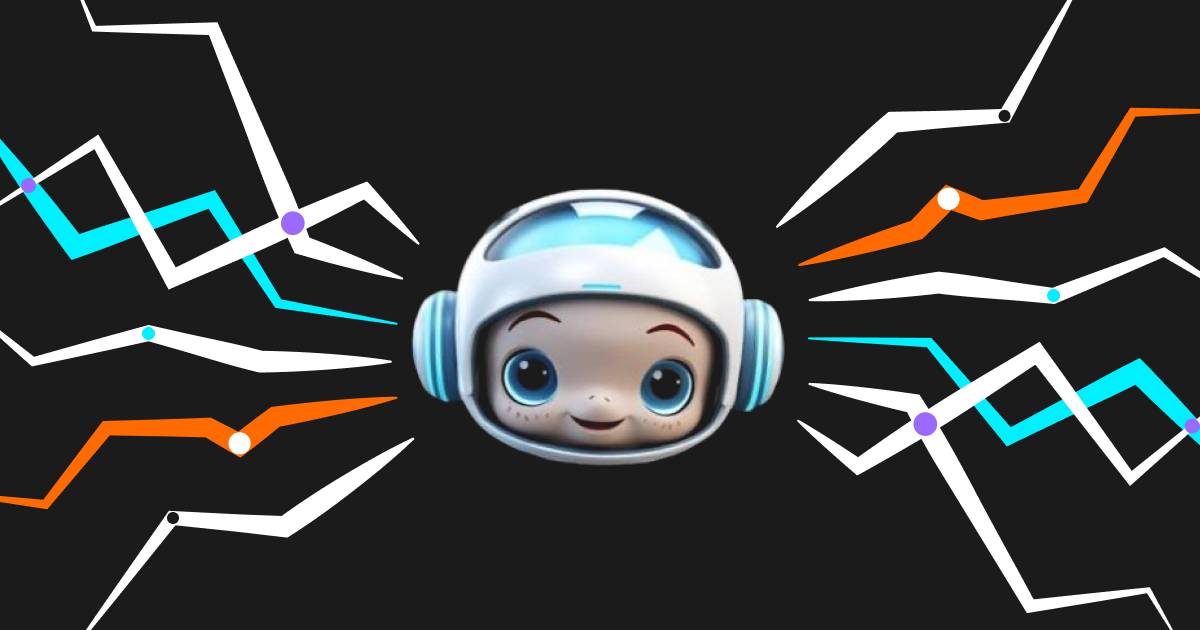Introduction
The integration of Blockchain and the Internet of Things (IoT) represents a groundbreaking advancement in technology, offering solutions to many challenges faced by IoT ecosystems. This article explores the fundamentals of both technologies, their integration, benefits, challenges, and potential applications. Understanding how Blockchain can enhance IoT systems is crucial for leveraging this powerful combination to create secure, efficient, and reliable networks.
Understanding IoT and Blockchain
Internet of Things (IoT):
The Internet of Things (IoT) refers to a network of physical objects, or “things,” embedded with sensors, software, and other technologies to connect and exchange data with other devices and systems over the internet. These devices range from everyday household items like refrigerators, thermostats, and smart home devices to sophisticated industrial tools and machinery. IoT aims to create an interconnected environment where devices can communicate, share data, and perform actions autonomously, leading to smarter operations and enhanced user experiences.
Key components of IoT include:
- Sensors and Actuators: Devices that collect data from the environment or perform actions based on received instructions.
- Connectivity: The communication protocols that enable devices to exchange data, such as Wi-Fi, Bluetooth, Zigbee, and cellular networks.
- Data Processing: The analysis and processing of collected data, often performed on edge devices or centralized cloud platforms.
- User Interface: Interfaces through which users interact with IoT devices, including mobile apps, web dashboards, and voice assistants.
Blockchain:
Blockchain is a decentralized digital ledger technology that records transactions across many computers in such a way that the registered transactions cannot be altered retroactively. Each transaction is grouped into a block, and these blocks are linked together in chronological order, forming a chain. Blockchain’s decentralized architecture eliminates the need for a central authority, reducing the risk of single points of failure and enhancing security.
Key features of blockchain include:
- Decentralization: Distributed across multiple nodes, ensuring that no single entity has control over the entire network.
- Transparency: All transactions are visible to participants in the network, promoting trust and accountability.
- Security: Cryptographic techniques protect data integrity and ensure that once data is recorded, it cannot be altered or deleted.
- Consensus Mechanisms: Methods like Proof of Work (PoW) and Proof of Stake (PoS) ensure that all nodes agree on the validity of transactions.
Integration of Blockchain and IoT
Integrating blockchain with IoT addresses several inherent challenges in IoT systems, including security, scalability, and data integrity. Here’s how blockchain enhances IoT:
- Security:
- Decentralization: IoT systems are often vulnerable to cyber-attacks due to their centralized architecture. Blockchain’s decentralized nature distributes data across multiple nodes, making it significantly more difficult for attackers to compromise the system. This decentralization enhances the overall security of IoT networks by reducing single points of failure.
- Encryption and Authentication: Blockchain utilizes advanced cryptographic techniques to encrypt data transmitted between IoT devices. This ensures that data remains confidential and prevents unauthorized access. Additionally, blockchain can be used to authenticate IoT devices, ensuring that only legitimate devices can join and communicate within the network. This prevents spoofing attacks and unauthorized devices from compromising the network.
- Data Integrity:
- Immutable Ledger: One of blockchain’s most significant advantages is its immutable ledger. Once data is recorded on the blockchain, it cannot be altered or deleted. This feature is particularly crucial for IoT applications that require high data integrity, such as healthcare, supply chain management, and financial services. The immutability of the blockchain ensures that data collected from IoT devices remains accurate and trustworthy over time.
- Traceability: Blockchain provides a transparent and traceable record of all transactions. Each transaction is timestamped and linked to the previous one, creating a chronological chain of events. This traceability allows stakeholders to track the history of data and verify its authenticity, which is essential for applications like supply chain management, where the provenance of goods needs to be established.
- Scalability:
- Efficient Data Management: IoT ecosystems generate vast amounts of data from numerous devices. Blockchain can handle large volumes of transactions and data, making it suitable for managing IoT networks. By distributing data across multiple nodes, blockchain ensures efficient data processing and storage, reducing the burden on centralized servers and enhancing overall system performance.
- Smart Contracts: Smart contracts are self-executing contracts with the terms of the agreement directly written into code. These contracts can automate processes and transactions between IoT devices, reducing the need for intermediaries and minimizing human intervention. For example, in a smart home, a smart contract can automatically adjust the thermostat settings based on data from temperature sensors, enhancing convenience and energy efficiency.
Benefits of Blockchain-IoT Integration
- Enhanced Security:
- Blockchain’s decentralized architecture significantly enhances the security of IoT networks by eliminating single points of failure. This makes it much more difficult for cybercriminals to launch successful attacks, such as Distributed Denial of Service (DDoS) attacks, which are common in centralized systems.
- The encryption techniques used in blockchain ensure that data transmitted and stored by IoT devices is secure. Even if an attacker intercepts the data, they would not be able to read it without the decryption key, ensuring data privacy and protection.
- Improved Data Integrity and Trust:
- The immutable nature of blockchain guarantees that data recorded from IoT devices cannot be altered or tampered with. This ensures the accuracy and reliability of the data, which is critical for applications that require high data integrity, such as medical records and financial transactions.
- The transparency and traceability provided by blockchain build trust among stakeholders. Since all transactions are visible to participants, it is easy to verify the authenticity of data and ensure that it has not been tampered with. This trust is essential for fostering collaboration and cooperation in IoT ecosystems.
- Operational Efficiency:
- Smart contracts automate transactions and processes between IoT devices, reducing the need for manual intervention and minimizing human errors. For example, in a supply chain, a smart contract can automatically trigger payments once goods are delivered and verified by IoT sensors, streamlining the payment process and reducing delays.
- Real-time data exchange and processing enabled by blockchain and IoT integration facilitate faster decision-making and response times. For instance, in a smart city, IoT sensors can monitor traffic conditions and adjust traffic lights in real-time to optimize traffic flow, reducing congestion and improving overall efficiency.
Challenges of Blockchain-IoT Integration
- Scalability Issues:
- Blockchain technology, particularly public blockchains, faces scalability challenges due to the high computational power and time required for transaction processing. As the number of IoT devices and transactions increases, the blockchain network may struggle to handle the load, leading to slower transaction times and higher costs.
- Solutions such as sharding (dividing the blockchain into smaller, more manageable pieces) and off-chain transactions (processing transactions outside the blockchain and recording only the final result) are being explored to enhance scalability and improve performance.
- Interoperability:
- Integrating diverse IoT devices, each with its protocols and standards, into a cohesive blockchain network can be complex. Ensuring that all devices can communicate and exchange data seamlessly requires developing universal standards and protocols.
- Interoperability is essential for the widespread adoption of blockchain and IoT integration. Without it, the integration may be limited to specific use cases and environments, reducing its overall impact and potential benefits.
- Regulatory and Legal Concerns:
- The regulatory framework for blockchain and IoT is still evolving. Ensuring compliance with data protection laws, such as the General Data Protection Regulation (GDPR), and addressing legal issues related to automated processes and smart contracts are essential.
- Legal concerns such as liability and accountability in case of smart contract failures or disputes need to be addressed. Establishing clear guidelines and regulations will help mitigate these risks and promote the adoption of blockchain and IoT integration.
- Energy Consumption:
- Blockchain, particularly those using proof-of-work consensus mechanisms, can be energy-intensive. The computational power required to validate transactions and maintain the blockchain can lead to high energy consumption, which is a significant concern for sustainability.
- Exploring more energy-efficient consensus algorithms, such as proof-of-stake or delegated proof-of-stake, is important for sustainable integration. These algorithms reduce the energy required for transaction validation, making blockchain more environmentally friendly.
Real-World Applications
- Supply Chain Management:
- Transparency: Blockchain provides end-to-end visibility of the supply chain, allowing stakeholders to track products from origin to destination. IoT devices can monitor conditions such as temperature and humidity during transit, ensuring product quality and compliance with regulations.
- Efficiency: Automated smart contracts streamline operations by triggering actions such as payments and inventory updates once predefined conditions are met. This reduces delays, minimizes human errors, and enhances overall supply chain efficiency.
- Healthcare:
- Patient Data Management: IoT devices like wearable health monitors collect real-time patient data, which can be securely stored on the blockchain. This ensures data integrity and privacy, allowing healthcare providers to make informed decisions based on accurate and reliable information.
- Drug Traceability: Blockchain can track pharmaceuticals from production to delivery, ensuring that they are genuine and have not been tampered with. This helps prevent counterfeit drugs from entering the market, ensuring patient safety and regulatory compliance.
- Smart Cities:
- Infrastructure Management: IoT devices monitor and manage city infrastructure such as traffic lights, waste management systems, and energy grids. Blockchain ensures secure and efficient data exchange between devices, enabling better decision-making and resource allocation.
- Public Safety: Blockchain enhances the security of IoT-enabled surveillance systems by providing a tamper-proof record of video footage and sensor data. This ensures the integrity of evidence in case of incidents and enhances public safety.
- Energy Management:
- Decentralized Energy Grids: IoT devices can monitor energy consumption and production at the household level. Blockchain facilitates peer-to-peer energy trading, allowing consumers to buy and sell excess energy directly. This promotes the use of renewable energy sources and reduces reliance on central power grids.
- Energy Efficiency: Smart contracts can automate energy distribution based on real-time demand and supply data from IoT devices. This optimizes energy use, reduces waste, and lowers overall energy costs.
The integration of blockchain and IoT offers a powerful combination that can significantly enhance the security, efficiency, and trustworthiness of IoT ecosystems. By addressing key challenges such as security, data integrity, and scalability, this synergy has the potential to transform various industries, paving the way for smarter, more connected, and secure environments. Continued research, development, and collaboration will be essential to fully realize the benefits of this integration and overcome the challenges it presents.
By understanding and leveraging the combined power of blockchain and IoT, businesses and organizations can build more secure, efficient, and reliable systems that drive innovation and growth in the digital age. The future of IoT with blockchain is promising, and those who adopt these technologies early will be well-positioned to lead in their respective fields.




